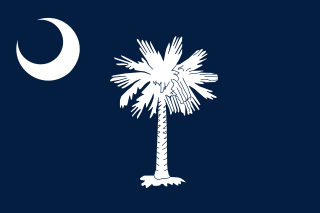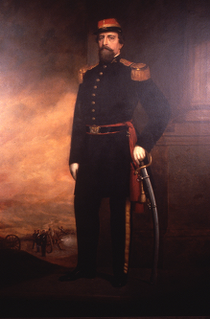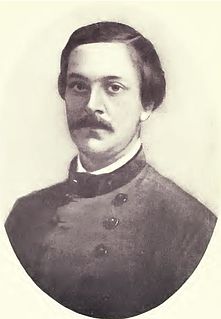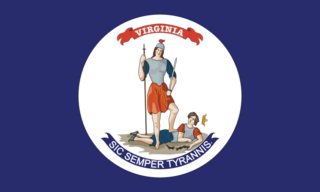| Wise Artillery | |
|---|---|
 Flag of Virginia | |
| Active | 19 April 1861 – 4 October 1862 |
| Country | Confederate States of America |
| Branch | Confederate States Army |
| Type | Artillery |
| Size | Battery of four field guns |
| Nickname(s) | Henry A. Wise Artillery, Alburtis' Battery, Brown's Battery |
| Engagements | American Civil War |
| Commanders | |
| Notable commanders | Ephraim G. Alburtis James S. Brown |
The Wise Artillery was an artillery unit with the Confederate States Army during the American Civil War.

The Confederate States Army (C.S.A.) was the military land force of the Confederate States of America (Confederacy) during the American Civil War (1861–1865), fighting against the United States forces. On February 28, 1861, the Provisional Confederate Congress established a provisional volunteer army and gave control over military operations and authority for mustering state forces and volunteers to the newly chosen Confederate president, Jefferson Davis. Davis was a graduate of the U.S. Military Academy, and colonel of a volunteer regiment during the Mexican–American War. He had also been a United States Senator from Mississippi and U.S. Secretary of War under President Franklin Pierce. On March 1, 1861, on behalf of the Confederate government, Davis assumed control of the military situation at Charleston, South Carolina, where South Carolina state militia besieged Fort Sumter in Charleston harbor, held by a small U.S. Army garrison. By March 1861, the Provisional Confederate Congress expanded the provisional forces and established a more permanent Confederate States Army.

The American Civil War was a civil war fought in the United States from 1861 to 1865, between the North and the South. The most studied and written about episode in U.S. history, the Civil War began primarily as a result of the long-standing controversy over the enslavement of black people. War broke out in April 1861 when secessionist forces attacked Fort Sumter in South Carolina shortly after Abraham Lincoln had been inaugurated as the President of the United States. The loyalists of the Union in the North proclaimed support for the Constitution. They faced secessionists of the Confederate States in the South, who advocated for states' rights to uphold slavery.
This unit was distinct from the Wise Legion Artillery which was a battalion formed in the Kanawha Valley in 1861 as part of Brig. Gen. Henry A. Wise's brigade.

Henry Alexander Wise was an American lawyer and politician from Virginia. He was a U.S. Representative and Governor of Virginia, and US Minister to Brazil. During the American Civil War, he was a general in the Confederate States Army. He was the father of Richard Alsop Wise and John Sergeant Wise, who both served as U.S. Representatives.
Cpt. Ephraim G. Alburtis organized the company in Berkeley County, Virginia, in 1859 in response to John Brown's raid on Harper's Ferry. It was named after then-governor of Virginia, Henry A. Wise. A group of men from this company are seen in a drawing of John Brown's execution as drawn by David Hunter Strother.

David Hunter Strother was an American journalist, artist, soldier, innkeeper, politician and diplomat. Both before and after the American Civil War, Strother was a successful 19th century American magazine illustrator and writer, popularly known by his pseudonym, "Porte Crayon". He helped his father operate a 400-guest hotel at Berkeley Springs which was the only spa accessible by rail in the mid-Atlantic states. A Union topographer and nominal cavalry commander during the war, Strother rose to the rank of brevet Brigadier General of Volunteers, and afterward restructured the Virginia Military Institute, as well as served as U.S. consul to Mexico (1879–1885).
The battery was mustered into Confederate service on April 19, 1861 when it was entered as "Co. B" of the 1st Virginia Light Artillery Regiment. It became an independent battery in April of 1862. Many of the men enlisted from Berkeley County, but the battery also included many men from Jefferson, Orange and Frederick counties. It was armed with two 12-pound smoothbore cannon and two 6-pound smoothbore cannon.
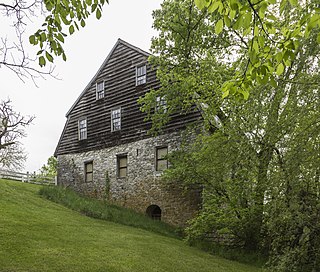
Berkeley County is located in the Shenandoah Valley in the Eastern Panhandle region of West Virginia in the United States. The county is part of the Hagerstown-Martinsburg, MD-WV Metropolitan Statistical Area.

Jefferson County is located in the Shenandoah Valley and is the easternmost county of the U.S. state of West Virginia. As of the 2010 census the population was 53,498. Its county seat is Charles Town. The county was founded in 1801.

Orange County is a county located in the Central Piedmont region of the Commonwealth of Virginia. As of the 2010 census, the population was 33,481. Its county seat is Orange.
Lt. John Pelham was the drillmaster and artillery instructor for the unit, which he joined in June 1861. Their first engagement came at the First Battle of Manassas, where they supported Stonewall Jackson's brigade.

Thomas Jonathan "Stonewall" Jackson served as a Confederate general (1861–1863) during the American Civil War, and became one of the best-known Confederate commanders after General Robert E. Lee. Jackson played a prominent role in nearly all military engagements in the Eastern Theater of the war until his death, and played a key role in winning many significant battles.
Col. Alburtis resigned in January 1862 due to ill health. 1st Lt. James Brown was elected captain and the battery became known under his name from January to October 1862. As such, they fought in the Seven Days Battles, the Peninsula campaign, Second Battle of Manassas and Antietam, where they repulsed a Union attack at Burnside Bridge.

The Seven Days Battles were a series of seven battles over seven days from June 25 to July 1, 1862, near Richmond, Virginia, during the American Civil War. Confederate General Robert E. Lee drove the invading Union Army of the Potomac, commanded by Maj. Gen. George B. McClellan, away from Richmond and into a retreat down the Virginia Peninsula. The series of battles is sometimes known erroneously as the Seven Days Campaign, but it was actually the culmination of the Peninsula Campaign, not a separate campaign in its own right.

The Battle of Antietam, also known as the Battle of Sharpsburg, particularly in the Southern United States, was a battle of the American Civil War, fought on September 17, 1862, between Confederate General Robert E. Lee's Army of Northern Virginia and Union General George B. McClellan's Army of the Potomac, near Sharpsburg, Maryland and Antietam Creek. Part of the Maryland Campaign, it was the first field army–level engagement in the Eastern Theater of the American Civil War to take place on Union soil. It was the bloodiest day in United States history, with a combined tally of 22,717 dead, wounded, or missing.
Wise Special Order #209 effectively ended the unit on Oct. 4, 1862. Capt. Brown had been severely injured at Antietam, and its effective strength was reduced to 48 men, half the strength they had been just four months previous to the Battle of Gaines Mill. Most of the men were reassigned to Eubank's/Taylor's Virginia Battalion or other units of Col. Stephen D. Lee's Battalion of Artillery. [1] [2]




